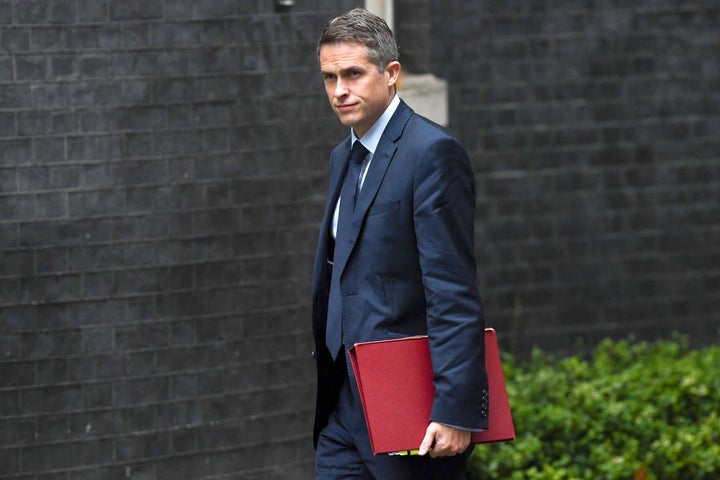You’re reading The Waugh Zone, our daily politics briefing. Sign up now to get it by email in the evening.
School’s out, for summer?
Early on in this pandemic, it was suggested by some that Covid-19 was somehow an equal opportunities virus. The fact that even prime ministers and cabinet ministers could catch it, and indeed be hospitalised by it, was seen as proof of its indiscriminate nature.
Of course, we are learning that coronavirus in fact has differing impacts on different groups. In health terms, there is the disproportionate impact on black and minority ethnic communities, and on men. Economically, the disease’s impact looks like it will hit women and young people hardest, as they are more likely to be in newly-precarious jobs in retail and hospitality.
But one thing that seems incontrovertible is the way Covid-19 has exposed inequalities that have for too long scarred the nation’s social fabric. And that inequality is nowhere more stark than in education, where all of the gains of the past 20 years risk being undone by the closure of schools to most pupils.
The Sutton Trust’s latest figures on the differing participation rates of children from differing backgrounds may not be surprising but they ought to be shocking. Some 22% of pupils at state secondaries attend online lessons every day, compared to 57% of pupils at private secondaries. Some 27% of the most advantaged state pupils are handing in work, compared to 8% of the least advantaged.
And in schools in the most deprived areas, more than a third of pupils have no access to home technology or wifi. Add in the fact that many of the most deprived children live in cramped flats and have parents who are time-poor as well as cash-poor and the problem is stark. It’s taken weeks for ministers to finally address the idea of providing laptops and wifi routers to deprived households.
Keir Starmer’s spokesman flagged the dangers today. “We are concerned that the longer the schools are shut, the bigger the inequalities between those children that have access to good homeschooling versus those who may not have access to good homeschooling, because of overcrowded accommodation [for example],” he said.
As Ofsted chief Amanda Spielman pointed out on Newsnight last night, “it’s not just the poorest, it’s the ones with little English... with special educational needs, the young ones who can’t read and write yet”. Spielman earlier this week told the Education Select Committee that no matter how innovative or brilliant the online lessons were, it was a “poor substitute” for actual classroom teaching.
From childcare to educational attainment, members of the public have raised the issue in their No.10 press conference questions. Yet all education secretary Gavin Williamson could tell MPs today was that schools would have to reopen in a “phased manner”. Committee chair Rob Halfon has come up with some imaginative ideas for extra lessons and support but Williamson seemed to have none of his own.

Deputy chief medical officer Jonathan Van Tam pointed out he had two sons at home but said any reopenings would need to be “painstakingly” undertaken. He also suggested that it would be “very tricky” to enforce social distancing for four or five-year olds, despite hints from Williamson that reception classes could be among the priorities for reopening.
What’s extraordinary is that there is so far no clear plan from Williamson for how his phasing may work. It seems obvious that as well as reception (for the transition to infant school) and the final year of primary school (who need all the preparation they can get for crucial transition to secondaries), those pupils in Year 10 (pre-GCSE) and Year 12 (first year of A-levels) need priority.
It’s these last two categories that most concern former Ofsted chief Michael Wilshaw, who has even suggested some of these pupils may need to resit a whole year of schooling unless extra tuition is offered in extended school days, weekends and possibly holidays over the coming coming months.
For children in Year 10 and 12, they are likely to suffer two months of disruption to their studies. If you take holiday into account, that’s a fifth of their entire school year gone. If, as some have suggested, kids don’t go back until next September, that would be a huge chunk of their two-year courses affected.
When you’re 16 or 18, missing months matter much more to you than to a fiftysomething MP. Via university and apprenticeship places, whole lifetimes of opportunity are at stake. And the poorest are most at risk. Yet there seems no sense of urgency in government, not least given the fact that government scientists themselves accept the relatively low risk to children from this disease. Johnson talks about “levelling up” the nation’s schools, but Covid-19 risks “dividing down” our education system further.
Of course getting the economy back on its feet is crucial, that’s why MPs and business groups knock on government doors daily. But it often seems that the children most vulnerable to the downsides of this pandemic lack a similarly powerful lobby to clamour for reopening. Perhaps the PM’s newborn son will act as a reminder of the singular life chances at stake for other children coping with this virus. And maybe in coming days their voice will be heard at the Cabinet table.
Quote Of The Day
“I absolutely share his, I guess, our, joint horror at the number of deaths.”
Dominic Raab to Keir Starmer on the rising care home Covid-19 mortality numbers in the UK
Wednesday Cheat Sheet
Dominic Raab revealed for the first time combined government figures for hospital and non-hospital Covid-19 deaths. The combined total pushed numbers up by 3,811 to 26,097. A new per capita graph put the UK among the worst death rates in the world, ahead of the US.
Public Health England official Yvonne Doyle warned the public against travelling by car as new figures showed the highest motor traffic since the lockdown began on March 23.
New PHE figures showed London boroughs have had the highest number of affected care homes. In Camden, 10 out of its 11 care homes have reported an outbreak, Hammersmith and Fulham had nine out of 10.
Matt Hancock looks unlikely to reach his target of 100,000 daily coronavirus antigen tests by the end of April. The latest figure 52,429 tests carried out in England, Scotland and Wales on Tuesday, from an overall capacity of just over 73,000 a day.
Boris Johnson’s partner Carrie Symonds gave birth to a baby boy at a London hospital. Although ‘NHS staff’ were involved, No.10 refused to say whether the hospital was an NHS one, whether the baby was premature or any other details. The PM will take his two-weeks paternity leave later this year.
The GMB union is to investigate allegations of misconduct against its former general secretary Tim Roache. His sudden departure has sparked fresh factional warfare within Labour.
Former PM Gordon Brown will help advise the Welsh government on the aftermath of the coronavirus crisis.
Cut-price pub chain Wetherspoon’s plans to reopen its bars and hotels “in or around June”, despite warnings from ministers that the sector was likely to be the last to be allowed out of lockdown restrictions.
What I’m Reading
What We Don’t Know About Covid-19 - New Yorker
Got A Tip?
Send tips, stories, quotes, pics, plugs or gossip to waugh.zone@huffpost.com.
Subscribe To Commons People
Each week, the HuffPost UK Politics team unpack the biggest stories from Westminster and beyond. Search for Commons People wherever you listen to podcasts and subscribe.

